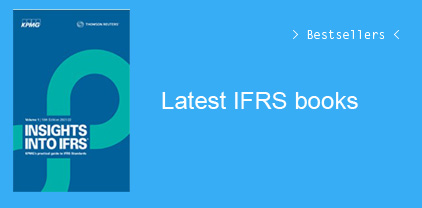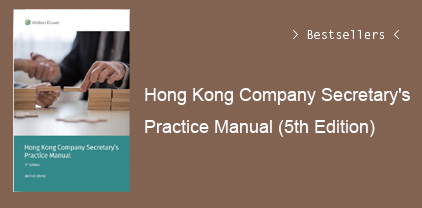SECTION 1 – INTRODUCTION 1
Chapter 1: About This Toolkit 3
Index of AP Tools 5
SECTION 2 – THE NEW AP DEPARTMENT 9
Chapter 2: The New AP Department 11
Introduction 11
Case Study: Journey to Excellence 11
Focus on Corporate Productivity 12
Accounts Payable and Procure-to-Pay (P2P) Process Improvements 13
AP Tool 1: AP Process Improvement and Automation Checklist 14
P2P Reporting, Understanding, and Perspective 15
AP Tool 2: Procurement Spend Analysis 16
Strategic Sourcing 17
Other Procure-to-Pay Best Practices 17
AP Process Improvement Impacts on Working Capital 18
Average Payable Period 18
Measuring Average Payable Period 18
When to Take a Trade Discount 19
Negotiating Payment Terms 20
Overview of the Requirements of the Sarbanes Oxley Act of 2002 23
Accounts Payable, Risk, and Fraud 25
Fraud Statistics 26
Introduction to Internal Controls 28
Standards of Internal Control 28
AP Tool 3: Types of Internal Controls 29
Defining Control Activities 31
Doxey700500_ftoc.indd 5 19-10-2020 13:31:57
The Three Critical Corporate Controls 32
AP Tool 4: The Benefits of Segregation of Duties (SoD) Controls 34
AP Tool 5: Mitigating Risk with Internal Controls 35
AP Tool 6: Compensating Controls to Mitigate Risk 38
AP Tool 7: Your Roadmap for Implementing an Internal Controls Program 40
AP Tool 8: The Top Twenty Controls for the AP Process 43
Benefits of a Payment Audit Process 45
AP Tool 9: Internal Controls Checklist 47
AP Tool 10: Sample Internal Controls Program for Accounts Payable for Companies Using the SAP ERP 47
AP Tool 11: Metrics to Drive Process Improvements 52
Chapter 3: Automating the AP Process 55
Introduction 55
Benefits of AP Automation 57
A Summary of AP Automation Functionality Considerations 57
Examples of AP Automation Solutions 59
Other Types of AP Automation 61
Imaging and Workflow Automation (IWA) 64
Different Flavors of Imaging and Workflow Automation 67
Electronic Invoicing 69
Different Flavors of Electronic Invoicing 72
Convergence of Electronic Invoicing and IWA 73
Implementation of Your P2P Automation Solution 74
Developing the Business Case 75
Software Solutions, Software-as-a-Service, or Outsourcing? 75
SECTION 3 – DISECTING THE P2P PROCESS 79
Chapter 4: What Is the P2P Process? 81
Introduction to the P2P Process 81
AP Tool 12: Dependencies and Interdependencies
Within the P2P Process 83
Chapter 5: Transforming the P2P Process 85
Introduction 85
AP Tool 13: Current State Analysis 86
Visioning and Transformation Roadmap 87
AP Tool 14: P2P Transformation Roadmap 88
Doxey700500_ftoc.indd 6 19-10-2020 13:31:57
AP Tool 15: Other Recommendations for P2P Transformation 88
AP Tool 16: Managing Change 89
AP Tool 17: P2P Transformation Metrics 90
AP Tool 18: Streamlining Your P2P Process Without Automation 92
AP Tool 19: How to Begin Your P2P Automation Journey 96
Chapter 6: Structuring the AP Organization 99
Introduction 99
The Finance and Accounting Organization 100
The Finance and Accounting Organizational Chart (Example) 100
Organizational Chart for an AP Department (Example) 101
History of the Transition 101
About Shared Services 102
Organizational Chart for a Shared Services Structure (Example) 103
Shared Services and Service Level Agreements (SLAs) 103
SECTION 4 – HOW PROCUREMENT AND RECEIVING IMPACT AP 105
Chapter 7: Supplier Selection and Management 107
Introduction 107
Supplier Selection and Management Process Flow 108
Supplier Selection and Management Process Insights 109
AP Tool 20: The Top Ten Best Practices in the Supplier
Management Lifecycle 109
AP Tool 21: Five Steps to Use When
“Fine-Tuning” Your Supplier Master 115
Another Look at Supplier Master File Management Best Practices 120
AP Tool 22: Supplier Diversity 124
AP Tool 23: Eight Critical Supplier Master Practices 128
AP Tool 24: Managing the Supplier Master File 130
Standards of Internal Control: Supplier Selection and Management 131
Chapter 8: Contract Management 135
Introduction to the Contract Management Process 135
Contract Management Process Flow 137
Contract Management Process Insights 138
AP Tool 26: Ten Recommendations for Establishing Contracts 142
Standards of Internal Control: Contract Management 147
Chapter 9: Purchasing and Ordering 151
Introduction to the Purchasing and Ordering Process 151
AP Tool 27: Five Steps in an Electronic Procurement Process 152
Purchasing and Ordering Process Flow 154
Purchasing and Ordering Process Insights 155
AP Tool 28: Four Best Practices to Consider for the Purchase
Requisition Process 157
The Catalog Procurement Model 158
Standards of Internal Control: Purchasing and
Ordering Process 163
Chapter 10: Receiving 179
Introduction to the Receiving Process 179
Receiving Process Flow 180
Receiving Process Insights 181
Standards of Internal Controls: Receiving Process 184
SECTION 5 – A LASER FOCUS ON AP 193
Chapter 11: The Supplier Master File 195
Introduction to the Supplier Master Process 195
AP Tool 29: Supplier Master File Process Best Practices 196
AP Tool 30: Supplier Master Coding Standards 214
Standards of Internal Control: Supplier Master 218
Chapter 12: Invoice Processing 231
Introduction to Invoice Processing 231
Invoice Processing Process Flow 232
Insights into Invoice Processing 233
Types of Matching Processes 235
Automating the Matching Process 236
AP Tool 31: Establishing Tolerances 237
AP Tool 32: Five Factors Driving the Automation of Invoice
Processing 239
The Benefits of Sending and Receiving Electronic Invoices 240
AP Tool 33: The Most Common Forms of Invoice Automation 241
AP Tool 34: Six Best Practices for Invoice Processing 244
AP Tool 35: Three Components of Imaging and Workflow 248
AP Tool 36: Nine Performance Indicators for
Invoice Processing 249
AP Tool 37: The 25 Top Reasons for Problem Invoices 251
Standards of Internal Controls: Invoice Processing 254
Chapter 13: P-Cards 261
Introduction to the P-Card Process 261
Types of Payment Cards 262
P-Card Definitions 266
AP Tool 41: The P-Card Scorecard 278
Standards of Internal Controls: P-Card Process 284
Chapter 14: Travel and Entertainment 289
Introduction to the T&E Process 289
AP Tool 42: Red Flags for the T&E Process 293
Standards of Internal Control: T&E Process 297
Chapter 15: The Payment Process 303
Introduction 303
AP Tool 43: Effectively Managing Your Payment Process 306
AP Tool 44: Five ACH Controls 307
AP Tool 45: Preventing Duplicate Payments 308
AP Tool 47: Tackling Payments Fraud 317
Chapter 16: Accounting, Reconciliation Processes,
Self-audit Tools, and Internal Controls 325
Introduction 325
Standards of Internal Controls: Accounting,
Reconciliation Processes, Self-Audits, and Internal Controls 334
Chapter 17: Customer Service 343
Introduction 343
Standards of Internal Controls:
Customer Service Process 347
Chapter 18: Reporting, Analytics, and Benchmarking 351
Introduction 351
Standards of Internal Control: Reporting, Analytics,
and Benchmarking Process 361
SECTION 6 – OTHER AP BUSINESS PROCESSES 365
Chapter 19: Supply Chain Financing (SCF) 367
Introduction 367
Unlocking Supply Chain Value 368
Doxey700500_ftoc.indd 9 19-10-2020 13:31:57
Chapter 20: Escheatment 371
Introduction 371
Uniform Unclaimed Property Act (the 2016 Act) 372
Trends in Unclaimed Property Audit and Compliance Issues 372
The Three Objectives of Unclaimed Property Laws 374
Chapter 21: Sales and Use Tax 381
Introduction 381
What the Wayfair Decision Means
for Out-of-State Sellers 382
Chapter 22: Independent Contractors and the
1099 Process 393
TIN Matching and 1099 Filers 393
Chapter 23: Business Continuity Planning 411
Introduction 411
How COVID-19 Is Impacting Today’s
Business Environment 412
Business Continuity Basics 412
The Difference Between Disaster Recovery and
Business Continuity 413
Other Definitions and Terms 413
Managing a Crisis 414
Accessing the Risk and Developing a Strategy 415
Taking Business Continuity to the Cloud 415
How to Ensure Continuous Business Continuity 416
AP Tool 56: Six BCP Best Practices 417
AP Tool 57: A Roadmap for Developing
Your BCP 418
AP Tool 58: Five Recommended BCP Internal Controls 419
SECTION 7 – INTRODUCTION 421
Accounts Payable: Quarterly Controls Self-Assessment
Questionnaire 423
Glossary 427
Index 451
































